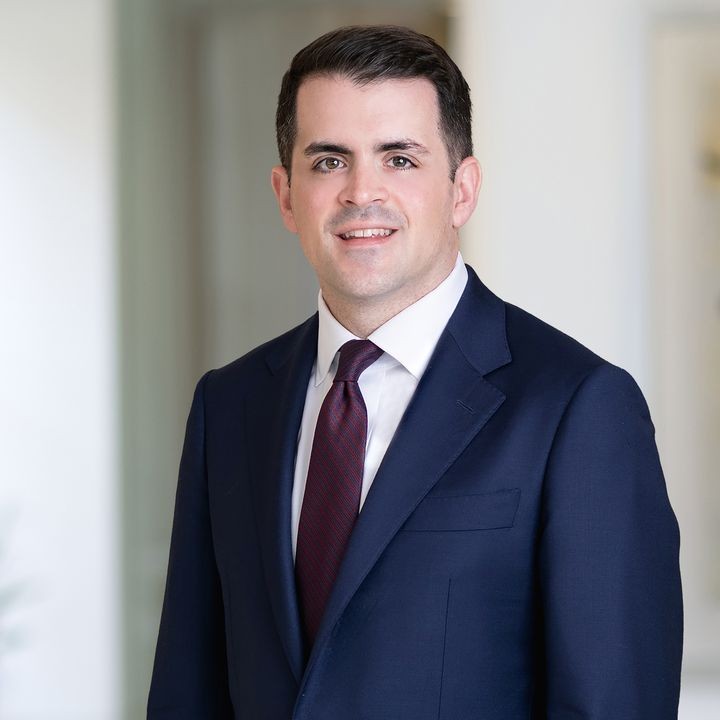FDA Provides Updates to Congress on FDORA, User Fee Implementation
What You Need to Know
Key takeaway #1
FDA provided an update on the implementation of new accelerated approval authorities and emphasized that drugs approved under the pathway meet efficacy requirements.
Key takeaway #2
FDA CDER Director Patrizia Cavazzoni said new guidance on clinical trial diversity will be available within “a matter of days.”
Key takeaway #3
Drug shortages, lab developed tests (LDTs), and artificial intelligence (AI) also were areas of focus for Members of Congress and FDA.
Client Alert | 6 min read | 05.29.24
On Wednesday, May 22, the House Energy and Commerce Health Subcommittee held a hearing that included a rare appearance from all three directors of the Food and Drug Administration’s (FDA) human medical product centers: Center for Drug Evaluation and Research (CDER) Director Patrizia Cavazzoni, Center for Biologics Evaluation and Research (CBER) Director Peter Marks, and Center for Devices and Radiological Health (CDRH) Director Jeff Shuren. The three center directors provided updates on the implementation of new programs and authorities included in the Food and Drug Omnibus Reform Act (FDORA) and the latest prescription drug and medical device user fee reauthorizations while also fielding questions on a range of topics from members. Topics discussed included:
- Accelerated Approval
The accelerated approval pathway allows FDA to approve drugs earlier in the process when a surrogate or intermediate endpoint indicates that the drug is likely to provide a clinical benefit, but data does not yet show such clinical benefit. As a condition of being approved under accelerated approval, FDA requires drug sponsors to complete confirmatory studies to demonstrate that clinical benefit, and FDA may withdraw approval via expedited means if they do not demonstrate clinical efficacy. In FDORA, Congress provided new tools to FDA to modernize the accelerated approval pathway, including the ability to more easily remove drugs from the market where confirmatory trials have not demonstrated a clinical benefit.
In agency written testimony, FDA touted its use of these new tools, including the agency’s first withdrawal of a drug using new streamlined procedures, and its use of newly codified authority to require manufacturers to begin studies to confirm a drug’s clinical benefit prior to approval. Dr. Marks also emphasized the importance of using accelerated approval to bring rare disease therapies to market more quickly.
Some members of the committee raised concerns about the program, however, their quibble was not with FDA or its new tools. Rather, Republican members raised concerns related to reimbursement policies from the Centers for Medicare and Medicaid Services (CMS), which has refused to covers some drugs approved under accelerated approval before additional studies are completed, suggesting that the drugs are not “fully approved”, and have not yet proven effectiveness. While FDA witnesses did not comment on CMS policies, they emphasized that FDA considers a drug approved via accelerated approval to have met the same standard as drugs approved under the traditional pathway, and made clear that they stand by their approval decisions.
- Clinical Trial Modernization and Diversity Action Plans
FDA also provided an update to committee members on work to modernize and diversify clinical trials. To promote clinical trial populations that reflected the intended patient population for drugs and devices, FDORA required drug and device manufacturers to submit diversity action plans for clinical studies during the drug application process. These requirements go into effect after FDA guidance on the content of these plans is finalized. FDA was required to issue draft guidance for comment no later than December 29, 2023, and committee Democratic leaders have raised concerns that the agency failed to meet this deadline, and still have not issued the guidance. Dr. Cavazzoni made news at the hearing, telling Rep. Tony Cárdenas (D-CA), that the guidance, which has been sitting at OMB since April, would be issued within “a matter of days.”
Additionally, Dr. Marks discussed the importance of diverse trial populations in vaccine clinical trials to boost the confidence of the public after vaccines are approved, and Dr. Shuren mentioned that CDRH was working on technologies for remote clinical trials, which could help diversify trial populations.
- User Fee Implementation, Performance Goals Metrics, and Transparency
Several members focused their attention on oversight of FDA operations, including with regard to performance goals established during the last round of user fee negotiations.
- In-person meetings: Some members, including Chair Cathy McMorris Rodgers (R-WA) and Rep. Michael Burgess (R-TX), emphasized the need to have FDA employees working in-person, rather than remotely, and to ensure meetings with sponsors and advisory committee meeitings were available to be held in-person. Dr. Cavazzoni explained that most FDA staff are not working remotely full-time, and the agency had already announced that it was returning to in-person advisory committee meetings this year. She also noted that for CDER, sponsors requested meetings in-person less than 10% of the time, suggesting that the sponsors also preferred the flexibility of remote meetings.
- Performance goals: FDA reported that in FY 2023, FDA has met or exceeded 9 of the 10 prescription drug user fee review goals, however, some members raised concerns about FDA missing hiring and meeting goals, which FDA acknowledged. Dr. Cavazzoni added that they were “doubling down” efforts to focus on meeting goals for meetings and hiring.
- Next user fee negotiations: Some members were already focused on the next round of user fee negotiations, set to formally begin in 2026, stressing the need for FDA—especially CDRH—to be transparent with Congress about the status of those negotiations.
- Drug Shortages and Medical Product Supply Chain Resilience and Safety
Drug and medical device shortages continue to be a top issue for members of the committee and FDA leaders. Rep. Frank Pallone, Jr. (D-NJ), the ranking member of the committee, asked FDA to comment on legislation that would provide FDA notification of spikes in demand that may lead to shortages, as well as bring additional transparency to the API supply chain. Dr. Cavazzoni largely agreed said that while most causes of drug shortages were due to economic conditions that affect generic drug suppliers’ ability to remain in the market, additional tools like those mentioned by Rep. Pallone would be helpful in allowing FDA to prevent and remediate some drug shortages.
- Laboratory Developed Tests (LDTs)
FDA’s recently finalized rule on laboratory developed tests was a topic of frequent conversation at the hearing, with members on both sides of the aisle asking whether FDA had the resources to implement the rule, given user fee commitments and other priorities. Dr. Shuren defended the rule, and noted that the phased approach toward enforcement will allow the agency to build LDT manufacturers into user fee negotiations, so resources will be there.
While the rule has been finalized and will begin to be implemented in a matter of weeks, the two co-authors of the VALID Act, Rep. Larry Bucshon (R-IN) and Rep. Diana DeGette (D-CO), reminded members that their legislative approach to regulating in vitro diagnostics outside of the medical device framework remains on the table. Dr. Shuren was quick to agree that VALID provided the agency and developers with more tools and flexibility than the rulemaking process allowed.
- Artificial Intelligence
Several members asked questions about FDA’s use and regulation of artificial intelligence (AI). The panelists from FDA highlighted their coordinated work of CDER, CBER, and CDRH in a recent white paper outlining how the centers will work together to regulate AI. Dr. Cavazzoni noted that the agency has the expertise in data science to review applications that contain AI elements, but FDA needed to do more work in building infrastructure, such as improving computing capabilities to review algorithms.
With regard specifically to medical devices, Dr. Shuren told Rep. Troy Balderson (R-OH) that as generative AI technology improves, the current framework for medical devices is “not fit for purpose”, and agency would need a model more focused on monitoring devices in the post-market setting, with third-party certification built in. Dr. Shuren also discussed CDRH’s participation in conversations related to AI in the International Medical Device Regulators Forum, including FDA’s work to provide and harmonize guidance on a life cycle management approach to regulating AI-enabled software.
Contacts
Insights
Client Alert | 6 min read | 04.18.25
On April 11, 2025, the U.S. Department of Justice (DOJ) issued guidance regarding the implementation and enforcement of the newly enacted final rule, “Preventing Access to U.S. Sensitive Personal Data and Government-Related Data by Countries of Concern or Covered Persons,” now referred to as the Data Security Program (DSP). The release included an Implementation and Enforcement Policy, a Compliance Guide, and Frequently Asked Questions (FAQs). Collectively, these documents are designed to help entities subject to the DSP understand and comply with the obligations set out under the Final Rule.
Client Alert | 2 min read | 04.18.25
Client Alert | 2 min read | 04.17.25
Client Alert | 5 min read | 04.15.25
Is Section 230 Going to Change? The FTC, DOJ and FCC Signal Significant Change for Online Businesses



